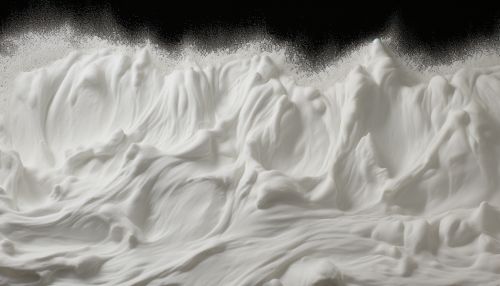Quantum foam
Introduction
Quantum foam, also known as Space-time foam, is a concept in Quantum Physics that describes the nature of space-time at the smallest scales. The term was coined by the American physicist John Wheeler in 1955. Quantum foam is a qualitative description of the turbulence caused by quantum fluctuations of space-time on very small scales.


Concept
The concept of quantum foam is a way to reconcile the principles of quantum mechanics with those of General Relativity. According to the theory of general relativity, space-time is a smooth and continuous fabric. However, quantum mechanics introduces the idea of uncertainty, which suggests that at very small scales, space-time would not be smooth and continuous, but rather turbulent and discontinuous. This turbulence is what is referred to as quantum foam.
The idea of quantum foam comes from the Heisenberg Uncertainty Principle, which states that it is impossible to simultaneously measure the exact position and momentum of a particle. This principle introduces a fundamental 'fuzziness' to the nature of the subatomic world. When applied to space-time itself, this uncertainty leads to the concept of quantum foam.
Quantum Fluctuations
Quantum foam is thought to be the result of Quantum Fluctuations. These are tiny, random changes in energy that occur in empty space, even in a perfect vacuum. These fluctuations are a consequence of the uncertainty principle. They cause particles and antiparticles to spontaneously form and annihilate in a very short time, creating a 'foam' of particles.
These fluctuations are believed to have played a crucial role in the formation of the universe. According to the theory of Cosmic Inflation, quantum fluctuations in the early universe were magnified to cosmic scales, leading to the large-scale structure of the universe we see today.
Implications for the Theory of Everything
The concept of quantum foam has significant implications for the search for a Theory of Everything, a theoretical framework that would reconcile quantum mechanics and general relativity. The existence of quantum foam suggests that space-time has a fundamentally quantum nature. This would require a theory of quantum gravity to describe accurately.
Several theories of quantum gravity, such as String Theory and Loop Quantum Gravity, have been proposed to explain the nature of quantum foam. However, these theories remain unproven, and the true nature of quantum foam is still a topic of ongoing research.
Experimental Evidence
Despite its theoretical importance, direct evidence for the existence of quantum foam has yet to be observed. The scales at which quantum foam is expected to exist are incredibly small, many orders of magnitude smaller than can be probed with current technology.
However, indirect evidence for the existence of quantum foam may be observable. For example, some theories predict that quantum foam would cause light from distant stars to 'flicker' as it passes through the turbulent space-time. Observations of this effect could provide indirect evidence for the existence of quantum foam.
Conclusion
Quantum foam is a fascinating concept that arises from the intersection of quantum mechanics and general relativity. It represents our best current understanding of the nature of space-time at the smallest scales. Despite the lack of direct evidence, the concept of quantum foam has had a profound impact on theoretical physics and our understanding of the universe.
